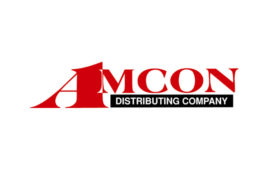 By Bill Scott, President, StoreReport LLC
By Bill Scott, President, StoreReport LLC
One of my favorite sales stories is the one about the new salesman that was constantly nagged by his superior to make more sales calls.
On his first day, he made five sales calls and was told that if he wanted to make it in the company, he would need to make more calls. The second day, he made 10 sales calls and his superior ran him over the coals again saying, “You have to make more sales calls.” After a week into his new job, he racked up 32 sales calls in a single day, and then he added, “I would have made 33, but one guy stopped me and asked me what I was selling.”
This salesman’s boss was correct to a certain degree. A salesman can’t make sales without making sales calls; however, at some point, quantity overrides quality and more sales calls equals fewer sales. A good salesperson knows where the balance is and tries to hover around it. A GREAT salesperson learns how to use that balance to improve his or her success.
There is a correlation between direct sales and retail sales in that too many choices often means fewer sales. Customers rarely browse in convenience stores. They hit the front door on a mission, and they do not respond well to interruptions during the process.
The salesman’s boss in the story was right when he insisted his salesman should make more sales calls, but at some point that system broke down and started working against the salesman.
I often equate this story to the amount of inventory I see in retail stores—especially in convenience stores. At a point, the amount of stock on shelves begins to work against the retailer.
Today, the typical convenience store has twice the inventory necessary to meet customer service level, and then some. The presentation of inventory is the retailer’s salesperson. Every item in their store is vying for the consumer’s attention. Too many competing products is worse than having too few, and besides, it goes against the very nature of convenience, which limits the effectiveness of promotions, and deals.
When was the last time you heard someone say, “I’m headed over to the c-store to see what deals they have today.” Never! In order to be successful, you must strive to find the proper balance of inventory against sales.
But, how do we find that correct balance?
Remember that the typical buyer in convenience stores comes to your store, as opposed to a larger store, because of the convenience. That’s why they’re called “convenience stores.” There is a stark contrast between, say a large grocery store and a 2,700 square-foot box with gas pumps sitting out front.
TURNS IS THE CONTROLLABLE DENOMINATOR
In every retail store, the worth of a single item is determined by TURNS. Convenience stores make their money from turns, not because of the volume of sales the average customer contributes. And since sales in every retail store are made up primarily of turns, the number of times an item is sold during a period determines whether or not the item deserves a space on your shelves.
Profit is the absolute goal of every retailer. Since profit is determined by (Turns * Margins), it really surprises me how little attention is being placed on turns, or on margins for that matter. I get so frustrated when I go into a store and see a vast array of soft drinks crammed into their coolers. Suppliers have gotten very good at structuring the margins they offer you on how much stuff they can put in your stores. We can debate all day on the quantity of soft drink flavors a store should display, but if a product has been in your store for a week and hasn’t turned even once, it needs to go back on the supplier’s truck.
The funny thing about this is that the supplier is not doing himself any favors by putting stuff in stores that does not sell. He may make a nice profit on the initial sale to the retailer, but if the item stays in the store for three months, it cripples his opportunity to deliver additional products.
Why do suppliers continuously make this mistake?
When suppliers know retailers don’t care, or believe that variety trumps turns, everybody, including your customers, will lose. Using the variables of TURNS and MARGINS, when retailers start focusing on these two variables (as opposed to the volume of inventory in their stores), their working capital will increase exponentially.
What Are the Elements Controlling Turns?
The formula is (Turns * Margins = Profits), but the question is, “How can I affect and control turns in my retail stores?” The answer is not simple. We must begin by dissecting the individual components that affect turns.
- Desirability is first, and the definition of ‘value’ is how your customers determine worth. If a customer sees no value in a product, most likely they will not buy it. Value may be defined as “What will it do for me? Will it satisfy my desire to eat something I will enjoy? Will it attract the opposite sex? Will it make me healthy? Can I have fun with it?” And so on and so forth. The perceived value to the customer, must always be greater than the retail price.
- Is the Price equal to the value? Items that return an equal amount of value may not be sufficient to cause a customer to buy. In order for an item to have real value, it must return a value greater than the purchase price. Hence the criticism: “Well, I guess you got what you paid for.”
- Exposure. Can the item be “favorably” seen by your customers? The value of an item is often determined by the items surrounding it. Anyone who has had experience in real estate knows that the perceived value of a home is often determined by other homes in the neighborhood. Hence the term, “Comp Value” by which most appraisals are based on. Put a beautiful home in the middle of a dump and the value of the home is negatively impacted. What astute investors are looking for is a lesser property in the company of properties of greater value, because the comp value of those homes positively impacts the value of the property being considered for purchase. Ergo, improvements made to the property in questions have the potential of having a much greater impact with respect to cost on the resulting value.
If you are setting out to fail in retail, invest in items that are undesirable, put a price on them that does not reflect on their value (either too high or too low), and hide it in the storeroom. You may be laughing now, but I can take you into the storeroom of almost any retailer and find an item that has all three of the attributes I just mentioned. This should be understood by all retailers, but even so, they continue to allow suppliers to bring stuff into their store which meets the first two criteria and eventually ends up meeting the third.
Inventory that does not turn hurts you in multiple ways. First it eats up your working capital, second it affects sales negatively and third it prevents retailers from stocking items that will turn. Remember, every item in your store is costing you money until it leaves your store in the hands of a consumer.
If you are not able to monitor the turn rate of each and every item in your store, you are failing in retail, because turns, above all else, is THE MOST important variable of every store.




